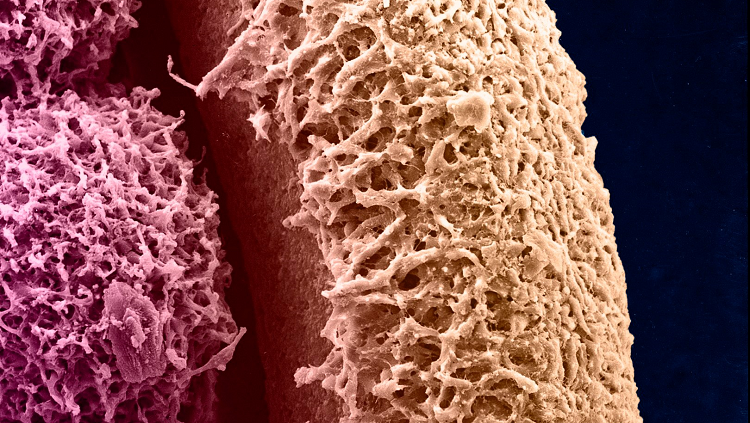Brains and Brawn Packed Like Peas in a Pod
- Published1 Aug 2019
- Author
- Source BrainFacts/SfN

Building a body with muscles, brains, and bones is tough. That’s why nature likes blueprints with repeating parts. Centipedes are an extreme example of this shortcut, but all animals — including humans — feature at least some repetition.
If you could unroll an embryo, you’d get a layered lasagna of cell types. Most of the top layer goes on to become skin, but one part folds down and rolls into a long cylinder, as seen here on the right in a developing chicken. This “neural tube” grows to become your spinal cord and brain.
Around the same time, three weeks after conception in humans, parts of the middle layer start to pinch off into two flanking columns of balls called somites (this chick has 55 pairs while most humans have 44), seen here on the left. Each pair eventually breaks into parts, one part surrounding a section of the neural tube as vertebrae, others forming stomach muscles and back muscles. All duos develop the same way — nature’s version of copy and paste — establishing the repeating patterns seen in slices of your torso.
CONTENT PROVIDED BY
BrainFacts/SfN
References
Gilbert SF. Developmental Biology. 6th edition. Sunderland (MA): Sinauer Associates; 2000. Formation of the Neural Tube. Available from: https://www.ncbi.nlm.nih.gov/books/NBK10080/
Gilbert SF. Developmental Biology. 6th edition. Sunderland (MA): Sinauer Associates; 2000. Paraxial Mesoderm: The Somites and Their Derivatives. Available from: https://www.ncbi.nlm.nih.gov/books/NBK10085/
Hill, M.A. (2019, June 11) Embryology Somitogenesis. Retrieved from https://embryology.med.unsw.edu.au/embryology/index.php/Somitogenesis
Also In Anatomy
Trending
Popular articles on BrainFacts.org

















